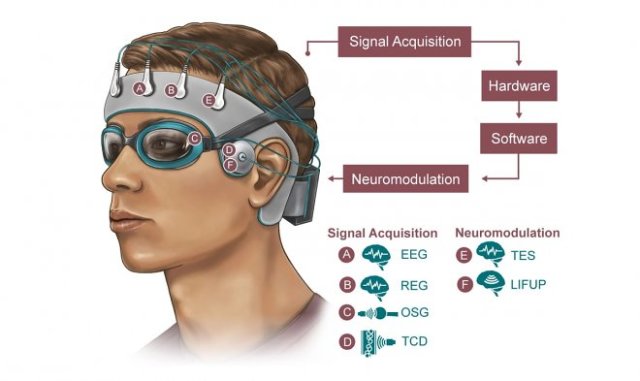
Sleep monitoring device
Given the importance of sleep in the process of human life, the US Army allocates funds for the development of a special device capable of controlling the intensity of brain activity during sleep.
As you know, chronic lack of sleep is fraught with serious problems for human health – for example, Alzheimer's disease. However, why this happens remains a mystery. Nine years ago, scientists managed to make a powerful breakthrough, thanks to the discovery of the glymphatic system. Its main purpose is to clear the toxins formed during deep sleep of the brain with spinal fluid. Until now, the study of the glymphatic system was possible only with the help of bulky MRI equipment. In this regard, the US Army allocated $ 2.8 million (in the first year of research) to create a special wearable device in the form of a compact headdress. The project was entrusted to a group of researchers from Rice University, Houston Methodist Hospital and Baylor College of Medicine. The device is a cap equipped with sensors that record brain signals, which are then processed using special algorithms. It is assumed that this device will also stimulate a more intensive flow of spinal fluid into the brain. On the electroencephalogram (EEG) obtained with the help of sensors, it will be possible to track the electrical activity of the brain, and on the rheoencephalogram - the intensity of blood flow. Sensors will measure its speed using ultrasonic pulses. Part of these pulses - orbital sonography - is directed through the eye socket. Other impulses – Doppler ultrasound - pass into the brain through the skull. After that, the flow of spinal fluid can be controlled using transcranial electrical stimulation (a method of physiotherapy based on the use of pulsed current of small amplitude) and low-intensity focused ultrasound pulses. The first results of the experiments can be obtained in a year.
